Prototying or What is not to be our next project!
See what we've done in the last months!
Welcome to 2022!
With 2021 finally behind us we wanted to share a little bit of insight what happened over at UmaikiGames this year following the launch of our first game Skellboy on the Switch in 2020!
Today we want to tell you about how we put a lot of thought into what our next game should be about and the prototypes that came of it!
INTRODUCTION
Most of 2020 was spent on our big ultimate edition, called Skellboy Refractured, released on Steam in January of 2021. We spent some months further optimizing this update for the Nintendo Switch which released in June. After that we slowly started saying goodbye to our daily work on the little skeleton to develop some smaller ideas out of all the knowledge we gained from our first commercial game (Besides that we still worked on a port for the iiRcade, a cute arcade machine. The port got released in September 2021. We will write a detailed postmortem on Skellboy later in 2021!).
So where do you go after working for a such a long time on a game and finally have to go on? Finding a new project is always hard and we are interested in a wide range of genres so we wanted to branch off from the action adventure route Skellboy took us.
We decided on a few constraints for our next title. Learning from older titles is a blessing and we gained a lot of experience in various fields. Skellboy turned out to be a fine minimalist action adventure, but its huge hand-crafted world was a substantial bottleneck. We knew this from the start but didn’t think it would be that bad time wise. So the idea was to push everything into a more modular and procedural mindset for level and world generation to reduce workload. We also wanted to scale our next project down quite a bit. Waiting on another release for around 3 to 4 years would be hardly sustainable for us right now.
Everyone remotely into gamedev knows that prototyping is important. Everyone is telling you this and it is true most of the time but sometimes for different reasons. There are also genres you cannot prototype really well because sometimes the fun comes not from a short gameplay loop you can put together quickly. Life sims focusing on collecting, harvesting and crafting for example. Creating a prototype where you can chop down trees, collect them and build stuff out of it will only become fun after you’re adding a lot of content to feed this simplicity. Prototyping is not only important for gameplay but also for art, music and for checking out new tech. Because of this, each of our prototypes was using different styles and programming techniques. Below we want to display three of our prototypes from 2021 that did not make the cut for us in the end.
SPHERE SHOOTER
The first idea was a space shooter where you can only move on spheres of different sizes. In its core the gameplay was built around the classic rougelite formula present in a lot of modern indie games. You would travel from planet to planet, collecting different upgrades for your space ship along the way (weapons, abilities, movement, …) and redoing it all together when your run will find its inevitable end.
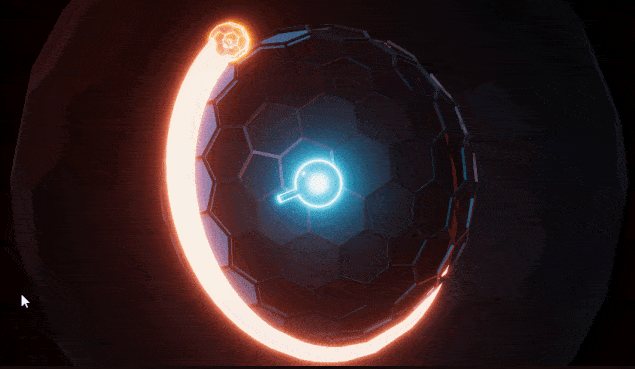
The catch of the game was how the player would advance from planet to planet: rather than destroying all enemies the goal was to capture all ground plates of a planet, essentially turning them into your own territory. With this a lot of different build paths for the ship not only focusing on shooting would be possible. Maybe use upgrades for better movement? Abilities to conquer a lot of territory in a short time?
Art was more abstract and polygonal in nature to create a simple and easy to create aesthetic. We also played around with procedural movement for the enemies which would have opened up a lot of opportunities going forward! If this interests you, here is a quick overview of the techniques used and here a more indepth explanation in the Prototype Series from Unity itself.
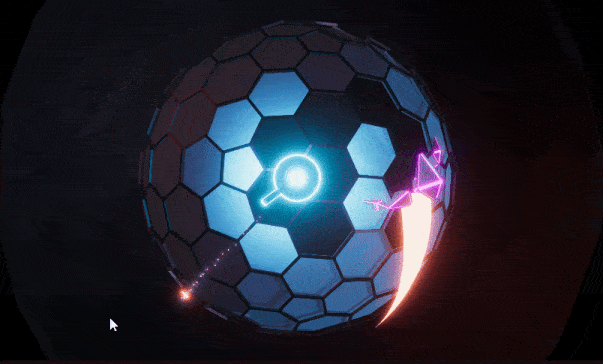
This project tackled both our problems described earlier. Level creation was procedural and the scope was small and easily scalable (adding new enemies, planet types and player upgrades would be modular changes).
In the end moving on a sphere sounded better than it is in actual gameplay because half of the sphere is always obstructed from view. Even with accommodations like a light see-through it was hard to keep track of all the bullets and enemies. Still, the reason we dropped it after a few weeks was way more simpler than that: motivation ran out quickly. We think the idea is still great, but there was just not enough confidence in the gameplay to keep developing it. In the end it doesn’t matter how good you think your idea is. If you cannot keep your intrinsic motivation on a fresh project for even a month, how you will get through the years of development ahead of you? Especially as an indie developer this is something you always have to keep an eye on. But even so, maybe we will come back to this idea later on!
Initial inspiration for this was a 2D rougelite space shooter called Nova Drift.
Listen to Björn’s first draft of Spherical shooter music:
MOBILE DOG WALKING PUZZLER
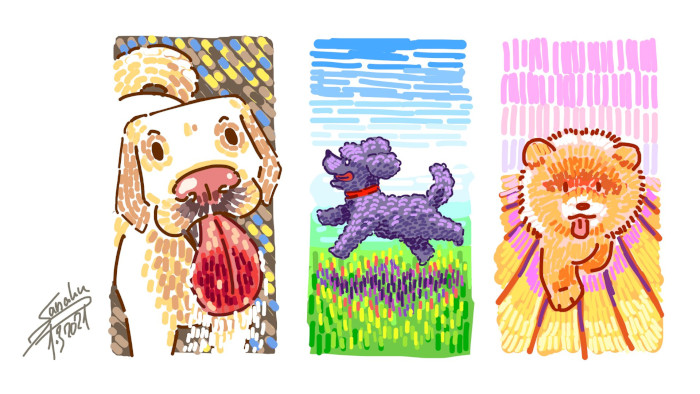
To further scale down, our next prototype was a mobile puzzler where you have to go on a walk with different dogs! You essentially have to find a route through the neighborhood back to your home while achieving different tasks along the way like buying groceries or visiting your grandma. Also your dog got different needs you need to accommodate, for example visiting the park on your route. The prototype is “turn based”, each step you take will also move cars which will limit your movement at some places. By adding a lot of cute dogs with different gameplay to unlock we also got some nice progression going on.
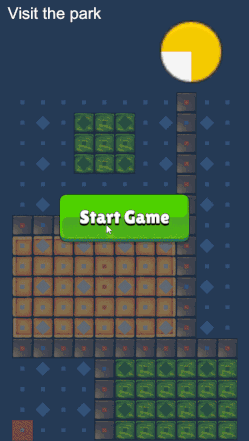
Mobile development is still a bit tricky in general, but got a lot better over the years. This prototype suffered a bit from insecurities in gameplay because especially I (the programmer and designer) am not playing a lot of puzzle games myself so there was not much knowledge to draw from for this type of game. Another hint that it is pretty important to play lots of games yourself so you already got a lot of intuition for designing these types of games! We also saw problems with monetizing the game in general on the mobile market, which utilizes a lot of practices we don’t feel are fair to the players and would get us into a lot of ethical dilemmas. There is tremendous potential in the mobile market but there are some inherent problems that made us reconsider.
So this prototype was also scrapped. The dogs are still cute.
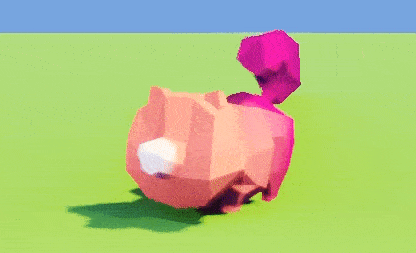
Listen to Björn’s first draft of doggo music:
DARK FANTASY CARD GAME
We spent the most time on our third prototype, an adventure RPG card game. In contrast to the other ideas the setting was highly important in this one from the beginning. We planned a dark fantasy world in tune with Dark Souls and Berserk. The player would be a magician, reviving lost souls on their way through a crumbled and distorted world, adding more characters with their respective card decks to the party.
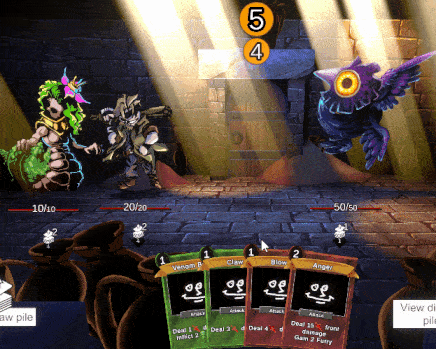
The theme was about giving these revived characters a destiny and looking over them as they have to deal with these changes in their new lifes. Gameplay wise the player had to navigate through dungeons by creating it with a second special deck made out of room cards. These could be gained by clearing rooms from enemies. The principle of a lot smaller decks, one for each character, captivated us. Combining different characters through playthroughs opened up a lot of emergent gameplay which was, together with the dungeon room deck, full of potential. By creating unique dungeon layouts the player could get access to special treasures.
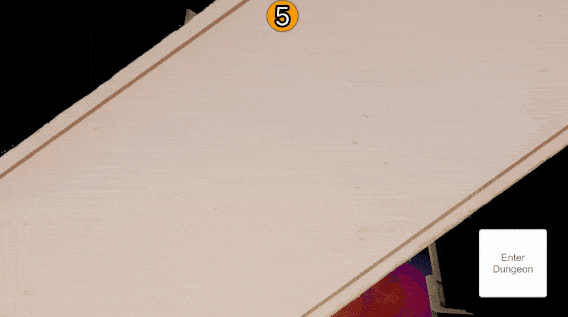
Unfortunately this game was pretty hard to prototype. It fell into the type of game which needs a lot of base content (characters, enemies, cards, …) to shine and truly display its worth. After three months we had a talk about how to proceed and if we want to commit to our idea. Motivation was high even after all these prototyping months. That’s the reason we truly considered going with this title but in the end we put it down out of two reasons: First, our research showed that the card game genre, especially rougelite RPG card games, have gotten so big in the last years that it seemed pretty over-saturated with a lot of really good titles competing over a relatively small player base. Second, our confidence in creating a truly balanced and well designed card game was not high enough. Playing around with the prototype showed us how much fun it was, but creating cards and their respective synergy was harder than initially thought. You could say we gained a lot of respect for card game creators!
For this title we played around with spline animation for the first time using Unity’s rather new built-in 2D animation system, but there is also spline and its addon which is heavily used by other developers!.
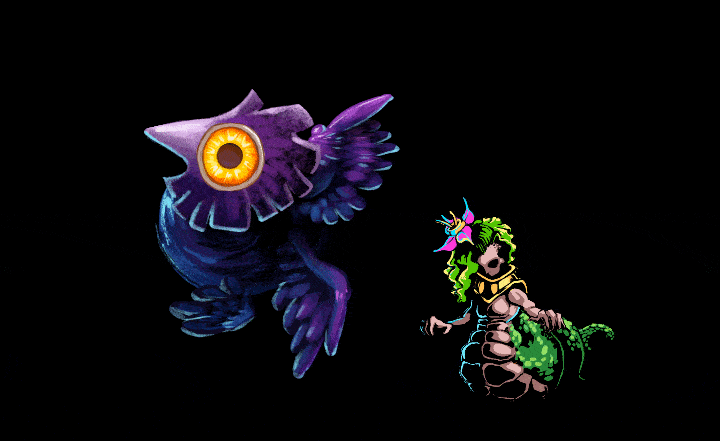
Listen to Björn’s first draft of dark fantasy card game music:
Inspiration for artstyle and atmosphere were Ring of Pain and Darkest Dungeon.
FINAL THOUGHTS
So in the end we played around with a lot of different genres, artstyles and technologies! Each of this could be useful in future projects for sure and will help us in our way onwards.
Good news: we’ve been working on another prototype for around 5 months and we already had our serious talk about whether we wanna keep it as our next project! We even teamed up with an additional artist to help us in the art department. There is still a lot to do before we announce it officially but we are super excited to show it to you when the time is right!
Also Schotti is still working on Santria!!
csg, Sabaku, Björn and Schotti from UmaikiGames
Tweet